Rare Rides Gems: The Exquisite Cadillac Eldorado, a Paragon of Luxury (Part LV)

The Cadillac lineup was all-new in 1971 , as the brand entered what would be seen later as its decline from the Standard of the World status established (partially via marketing) in 1908. Slab-sided looks of the late Sixties were exchanged for bulbous fenders, and front ends became ever heavier and chromed. Headlamps (aside from Eldorado) were spread apart by a brougham logo, and made for an awkward visual approach. Pointed front corners, a Cadillac design cue since the early Sixties were removed for all models save Eldorado, and used by Pontiac. The Eldorado arrived in its ninth generation and pointed the way forward as Cadillac’s aspirational halo personal luxury coupe and convertible.
The new Fleetwood Eldorado for 1971 continued on the same front-drive version of the E-body platform of 1967 with some notable revisions. Its stablemates in the Buick Riviera and Oldsmobile Toronado also received platform modifications. The most notable changes were dimensional, as wheelbases grew on all models.
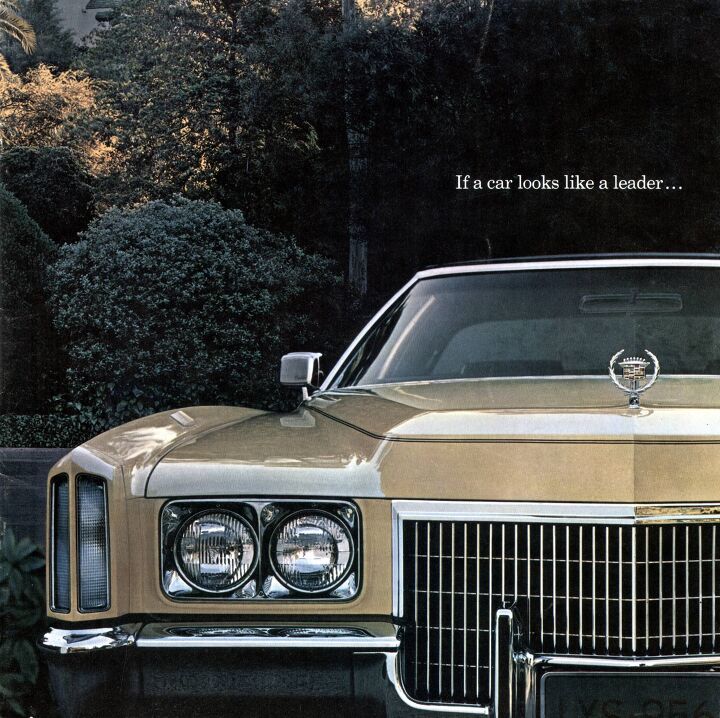
In their prior generations of 1966, the Riviera and Toronado shared a 119-inch wheelbase. Their overall lengths were very similar too, as the Riviera measured 211.2 inches, and the Toronado was a minutely tidier 211”. In 1971 the models diverged, as the Riviera took a sportier lean with its rear-drive layout, and the Toronado leaned heavily into disco brougham styling.
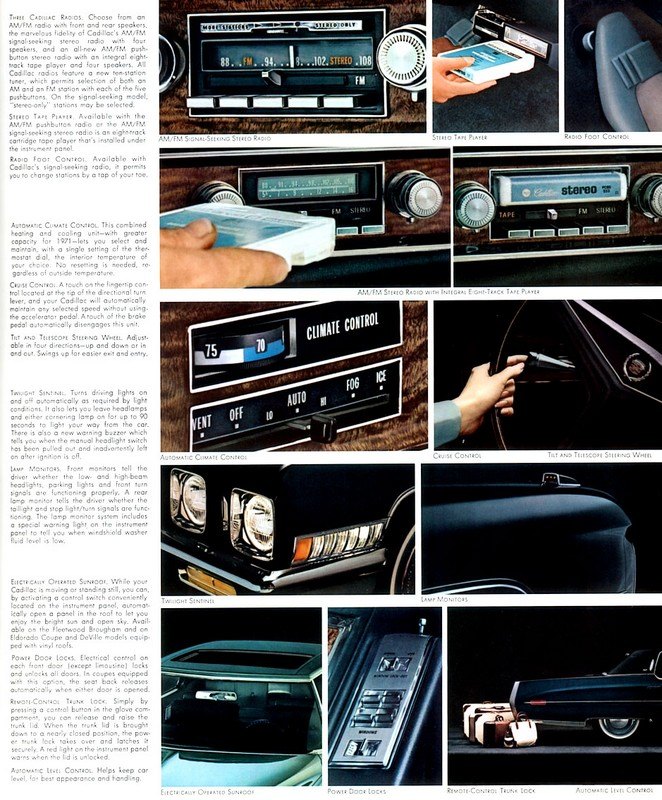
Both models saw their wheelbases stretch to 122 inches. The Riviera’s length expanded to 217.4 inches, the shortest it would be for this entire generation as all models experienced bloat. The Toronado was now notably longer than the Riviera, and lost all the sporting pretensions of the stylish initial generation. It measured a quite long 219.9 inches.
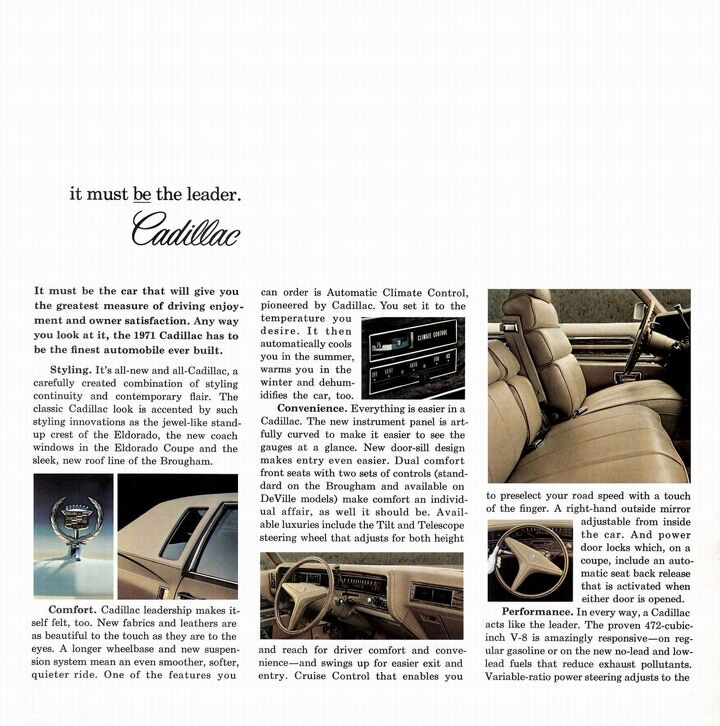
Both models also gained about 400 pounds in weight with their growth. Riviera weighed in at 4,247 pounds, while Toronado was 4,841. A modern and luxurious 7-passenger Buick Enclave weighs about 300 pounds less than the Toronado, at 4,537 pounds.
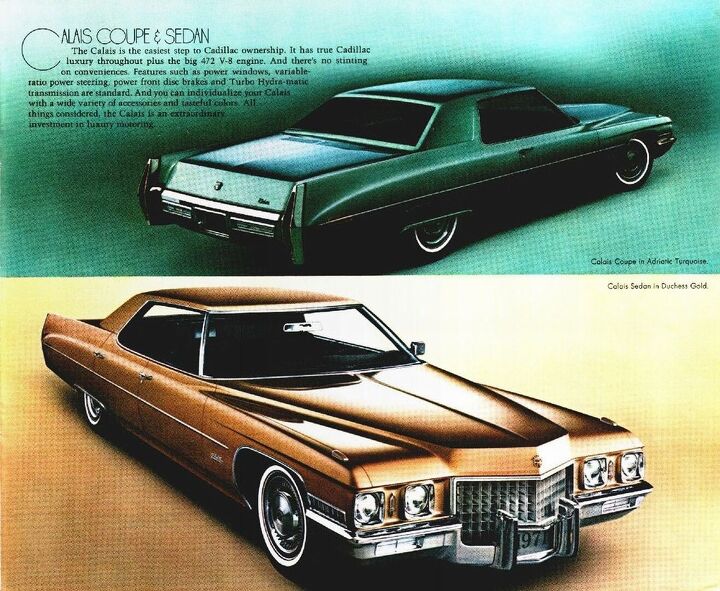
The 1971 Eldorado received the greatest stretch in its dimensions to become the largest of the three by several inches. The wheelbase increased from 120 inches in 1970 to 126 inches in 1971. Overall length increased from 221 inches to 224 inches. Like the others, this exterior measurement would prove the shortest for the entire ninth generation.
The width of the Eldorado was reduced by one-tenth of an inch, making it 79.8 inches wide altogether. Its height saw a slight rise due to the more elevated profile, reaching 54.2 inches total. Despite this change, the Eldorado’s weight didn’t climb as steeply as its counterparts because it came equipped with a substantial engine during the 1970 model year; thus, its mass only shifted from 4,696 pounds to 4,828 pounds between years.

The sizable 500 cubic inch (8.2L) engine stayed at the pinnacle regarding displacement for any mass-produced vehicle during that era and has not been altered since. Similarly, the three-speed transmission remained untouched as well. THM-400 HydraMatic Featured throughout GM's lineup of sedans, this particular model boasted a distinctive new element atop its extensive hood, signaling its luxurious standing: an upright hood ornament that supplanted the previous recessed design. This ornamental touch was unique to the Eldorado in 1971 but eventually became standard across all models within the brand until 2005 when production ceased with the last DeVille DHS.
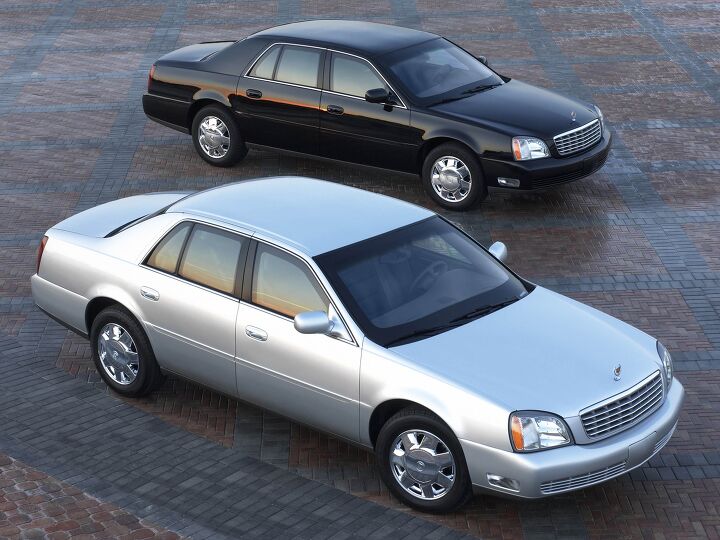
The selection of a hood ornament was fitting since the Eldorado shifted towards incorporating brougham elements and prioritizing luxury, abandoning its initial "sport coupe" purpose once more. Featuring fender skirts, a lengthened wheelbase, and increased heft due to enhanced trimmings and body panels, the Eldorado became considerably less oriented toward performance. Nonetheless, it provided additional amenities. comfort And enough room was provided for passengers inside, allowing it to accommodate six adults rather than just four! Bucket seats? Not at all.
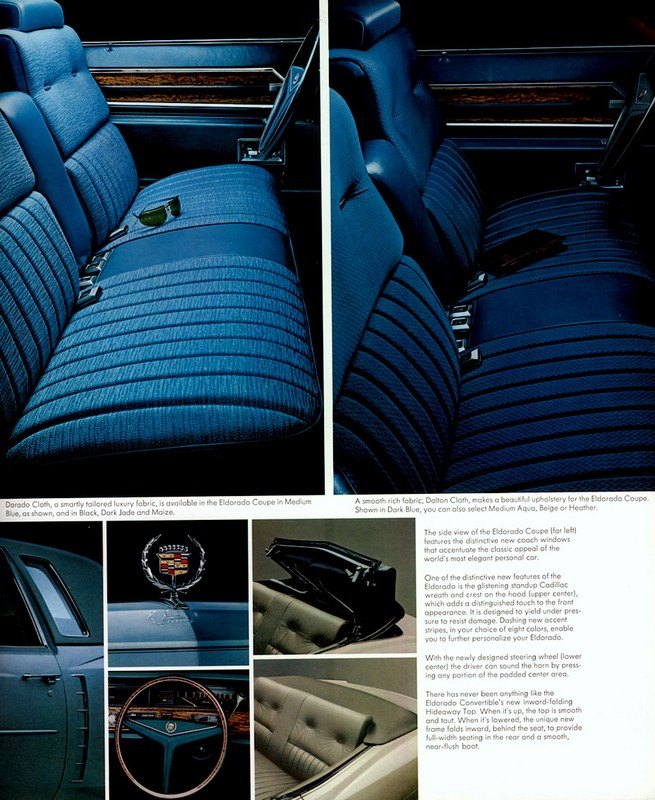
Customers also appreciated the return of the convertible Eldorado, as once more they could buy a top-tier cabriolet from Cadillac and not settle for the DeVille. Though it was part of the original Eldorado’s mission statement back in 1953, a convertible version went missing after 1966 as the model sought to differentiate itself from its close DeVille association. Cadillac figured out around 1971 that DeVille differentiation didn’t matter to the customer all that much.
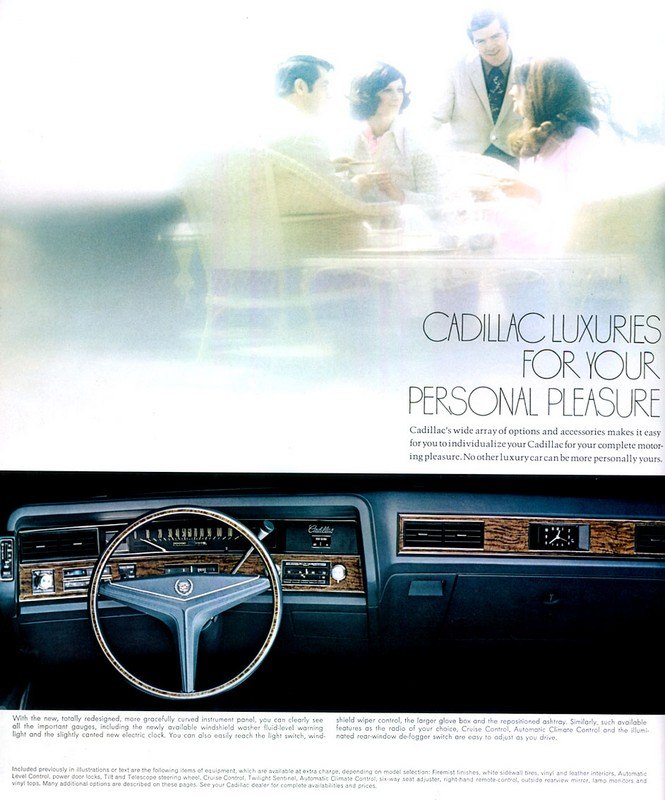
On the tech advancement front, there was a new monitoring system on the Eldorado which would become a customer favorite, and continue through 1993 and the end of the C-body DeVille. Fiber-optic notifications! At either end of the hood were small pods that contained three indicators each, with another in the rear parcel shelf.
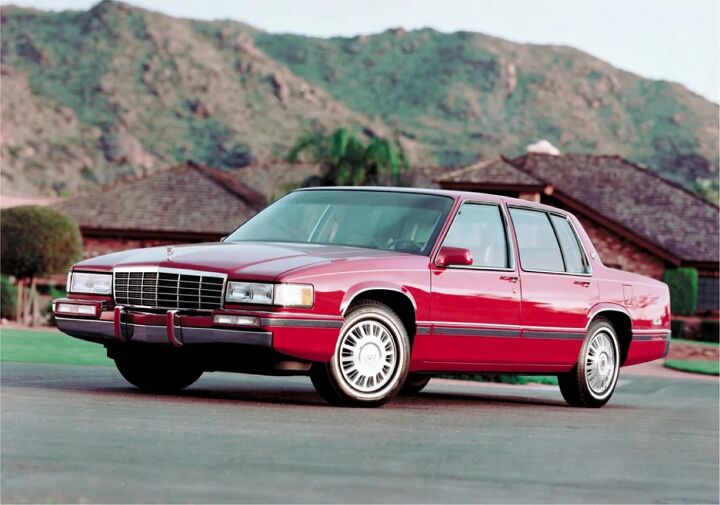
The front pods served to mark the corners of the hood, and also conveyed important information to the driver, lighted via fiber-optic cables. The headlamps, tail lamps, parking lamps, turn signals, and brake lights were all indicated via the pods. Appropriately, the brake lamps and rear turn signals indicators were in the pod on the parcel shelf inside the car.
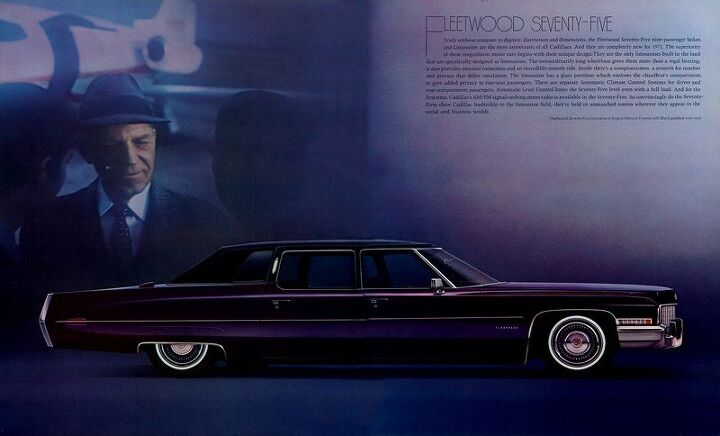
It’s worth mentioning that the notification pods were an additional option on models except for the Eldorado, but they could still be found even in lower trim levels like the Calais coupe and sedan (they were actually Photoshopped into the brochures). Here’s something intriguing to consider regarding this feature today: Many affluent customers opted out of including them in the Fleetwood Seventy-Five. Likely due to the belief that their chauffeur ought to manage the car and monitor its functionalities as part of their duties. Be sure to take good care of the car. , Robert .
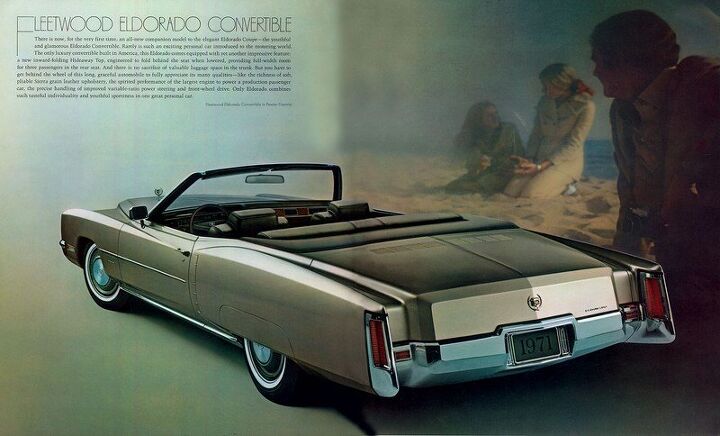
The ninth-generation Eldorado stood as the longest production run up until that point, spanning an impressive eight years. Throughout this period, it underwent various changes including redesigns, expansions, name alterations, cosmetic updates, interior refinements, emission restrictions, and a decrease in engine size. In our subsequent segment, we will explore how it all started and examine the outward appearance of the 1971 model.
[Images: General Motors/Cadillac]
Join our TTAC community. Get access to the most recent updates, exclusive features, TTAC insights, and all the information you need to uncover the truths about automobiles first. subscribing to our newsletter .

Posting Komentar untuk "Rare Rides Gems: The Exquisite Cadillac Eldorado, a Paragon of Luxury (Part LV)"
Please Leave a wise comment, Thank you